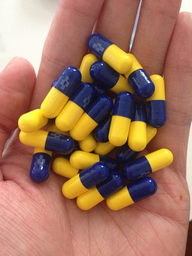
The pharmaceutical products that remain after biological treatment are at low concentrations where bacteria usually do not directly produce enzymes to initiate biodegradation. We rely instead on co-metabolism or non-specific enzymes. In co-metabolism, enzymes produced by the system's microbes while degrading plentiful organics also break down bonds in the pharmaceuticals. Once enzyme actions start to work on the product, it is often transformed into less harmful forms and starts to degrade through biomediated or environmental chemical transformations.
Current discussions involve using oxidation, carbon adsorption, UV treatment, or engineered enzymes or microbes. The big question is can any be used in cost-effective manner with such a low concentration of target substrates. If not, could an activated carbon filter concentrate enough of the pharmaceuticals to allow for efficient treatment via oxidation, enzyme, or biological treatment in a separate unit.
At Aster Bio, we first worked with domestic wastewater with high concentrations of pharmaceuticals when we developed a program to improve biological waste treatment at a camp for special needs children. Due to high use of various pharmaceuticals by the children, the small biological treatment system had trouble maintaining any kind of stable biomass. We looked at various organisms having the capabilities to degrade a wide range of pharmaceutical compounds (they are commonly found in pharmaceutical wastewater treatment plants) while being able to grow readily on domestic waste. Using a simple routine dose of the microbial blend, we were able to establish a biomass that was resistant to the ever changing and relatively high concentrations of pharmaceuticals in the camp wastewater. This in concept would be similar to a biological treatment process that could be used on pharmaceuticals concentrated on activated carbon - where naturally occurring microbes can be harnessed to directly degrade or co-metabolize pharmaceuticals once critical concentrations are reached.

 RSS Feed
RSS Feed